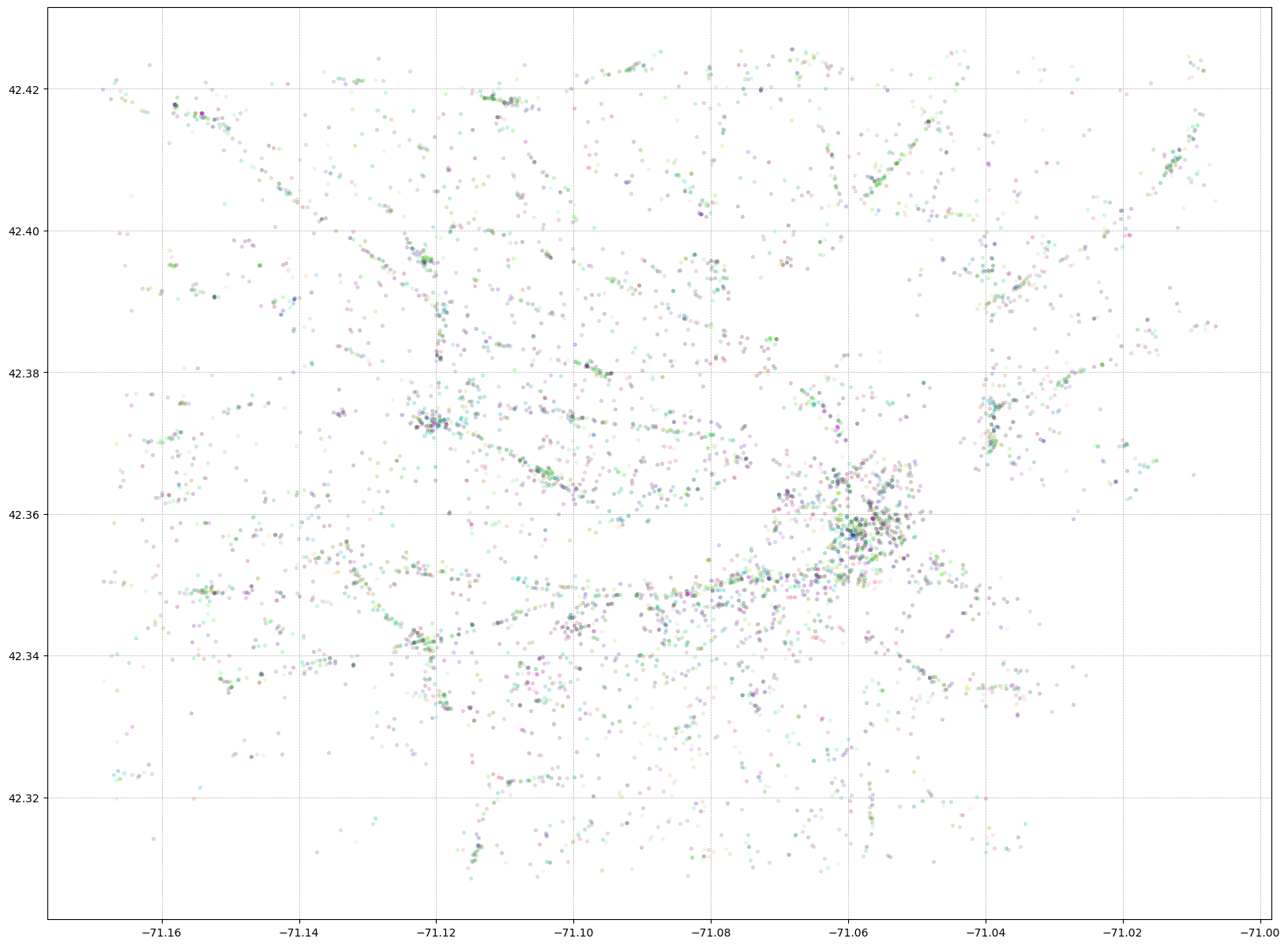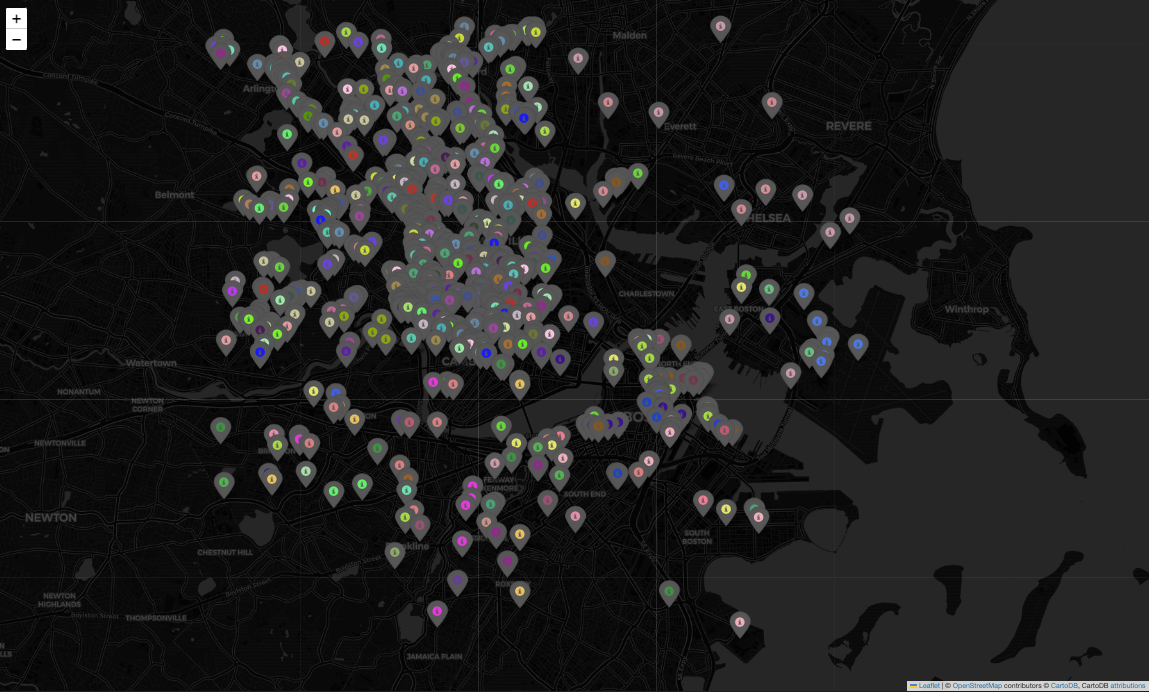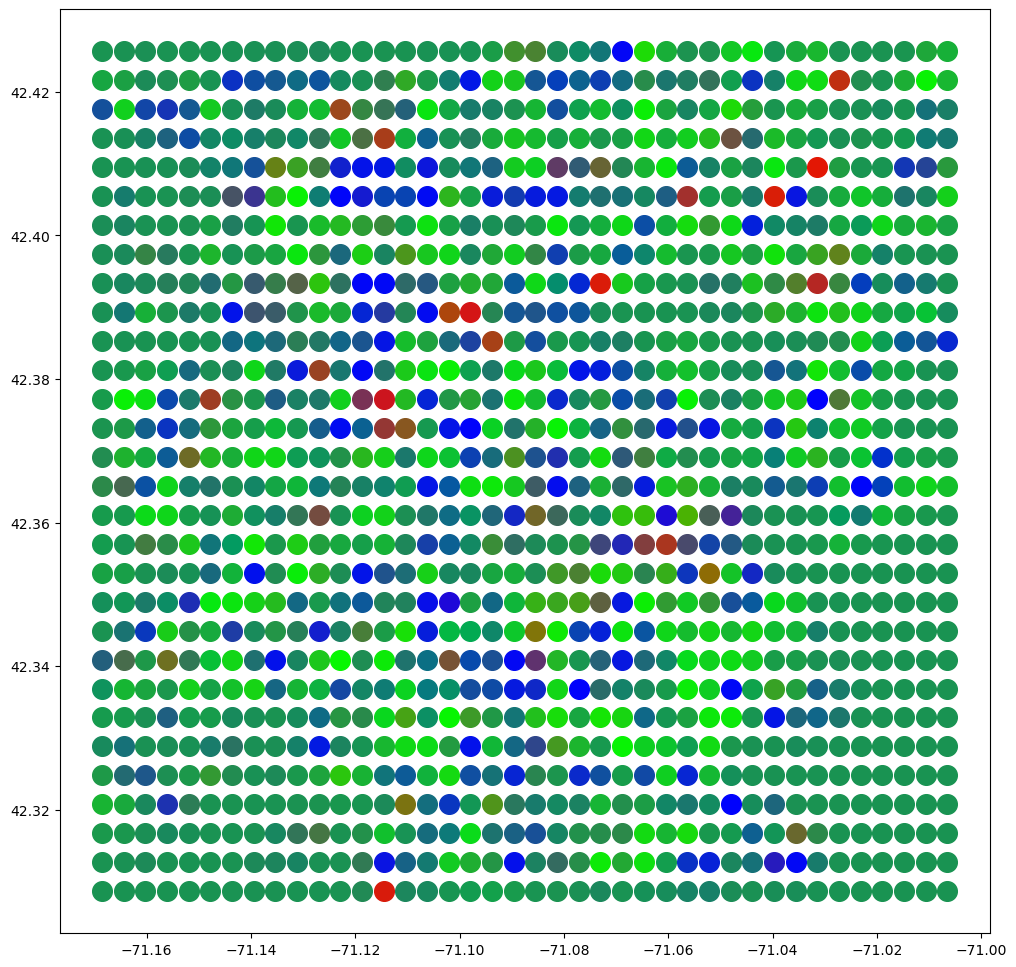Third Place Urban Analysis
During Harvard’s J-Term, I participated in Namju “NJ” Lee’s course on computational urban analytics. As a case study , we performed an urban analysis of the City of Boston, Massachusetts to understand “third place” distribution. A Logistic Regression model was trained on data collected through the Google Places API to determine the probability that an urban feature would be a “third place”. The model of Boston was then compared with models trained on data of Los Angeles, California and Honolulu, Hawai‘i to contrast each model’s interpretations of Third Place-ness in different urban contexts.

Plot of Boston Third Place data collected from the Google Places API.
![]()

Map visualization of Google Places urban data for City of Boston.
![]() Third Place predictions by Place Types in Boston.
Third Place predictions by Place Types in Boston.
![]()
Dominant Third Place by Area in Boston.
 Third Place predictions by Place Types in Boston.
Third Place predictions by Place Types in Boston.
Dominant Third Place by Area in Boston.
(This project documentation is still in progress)